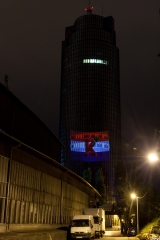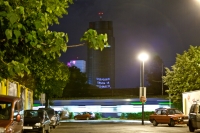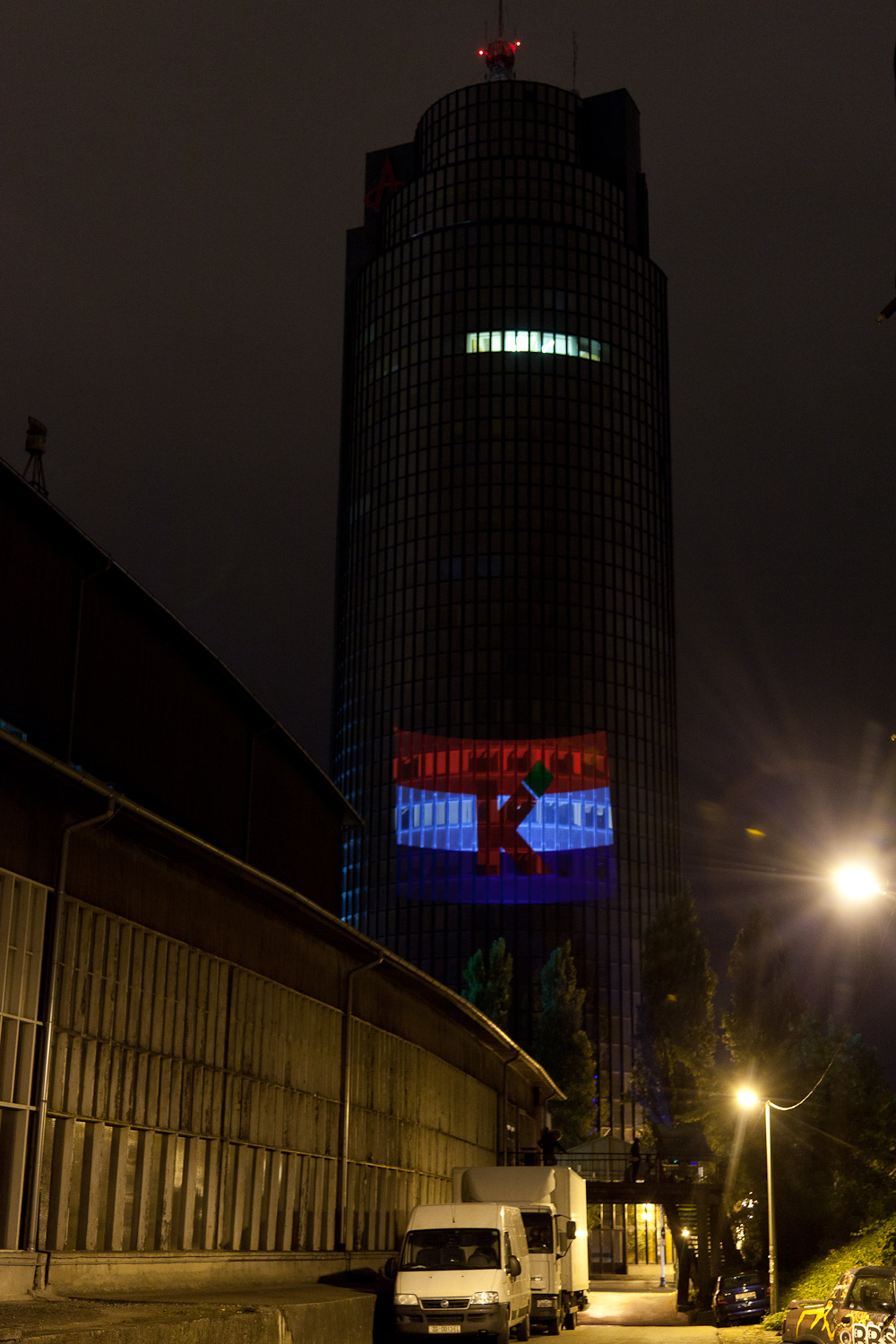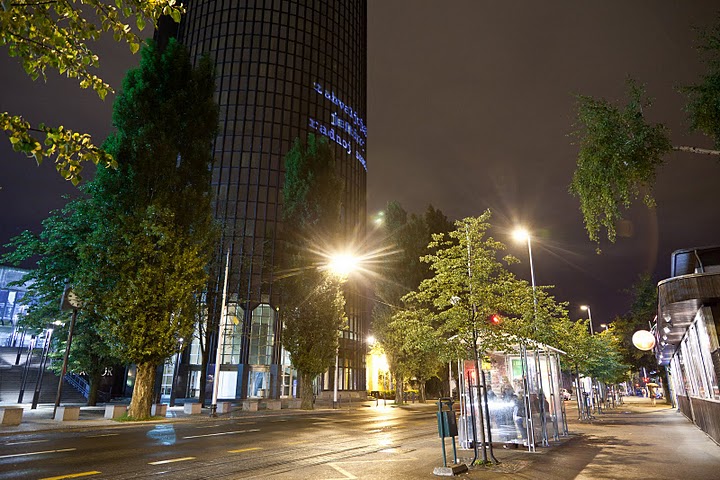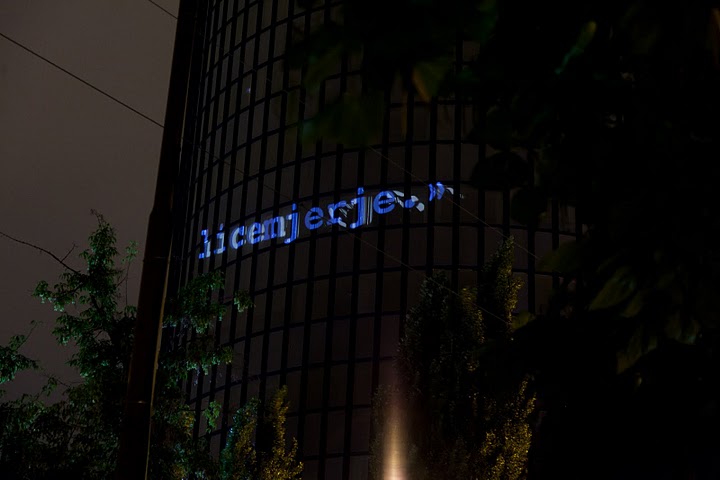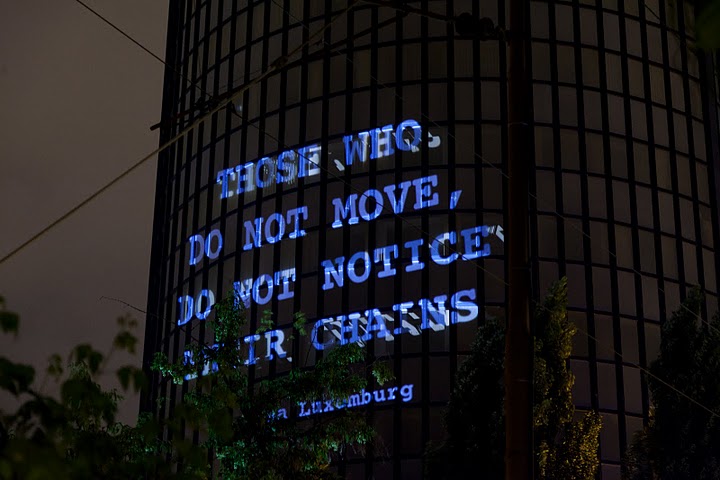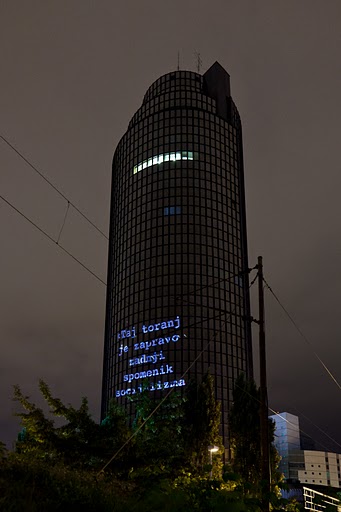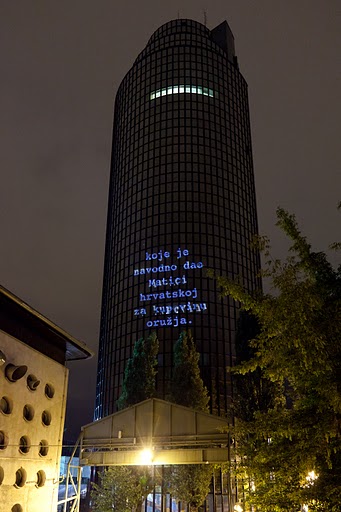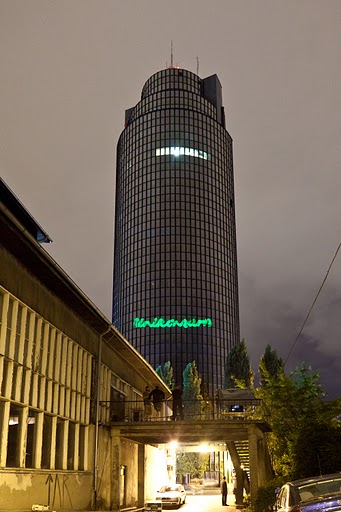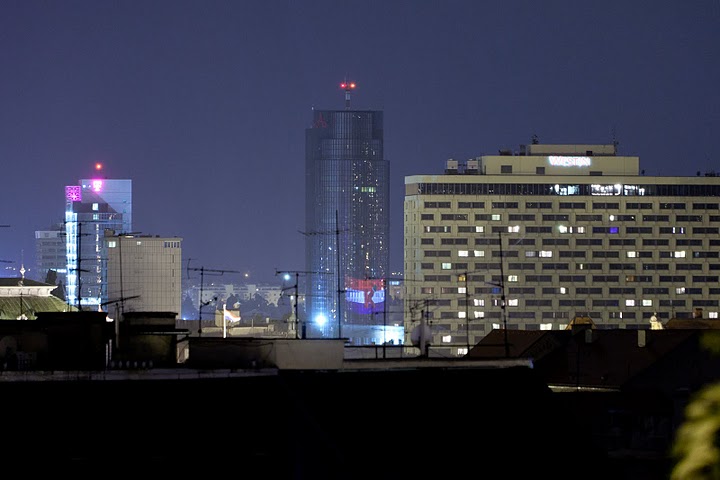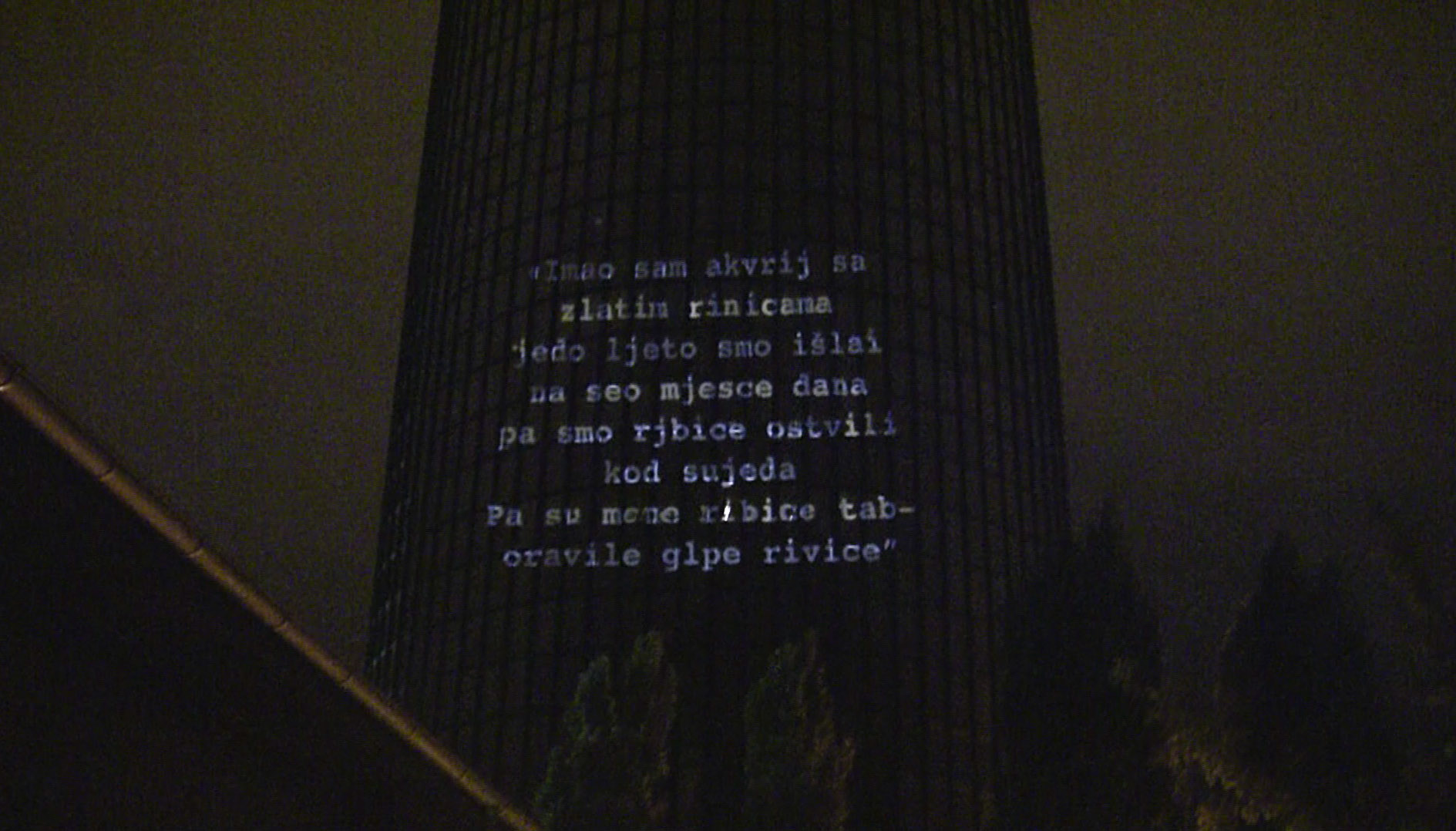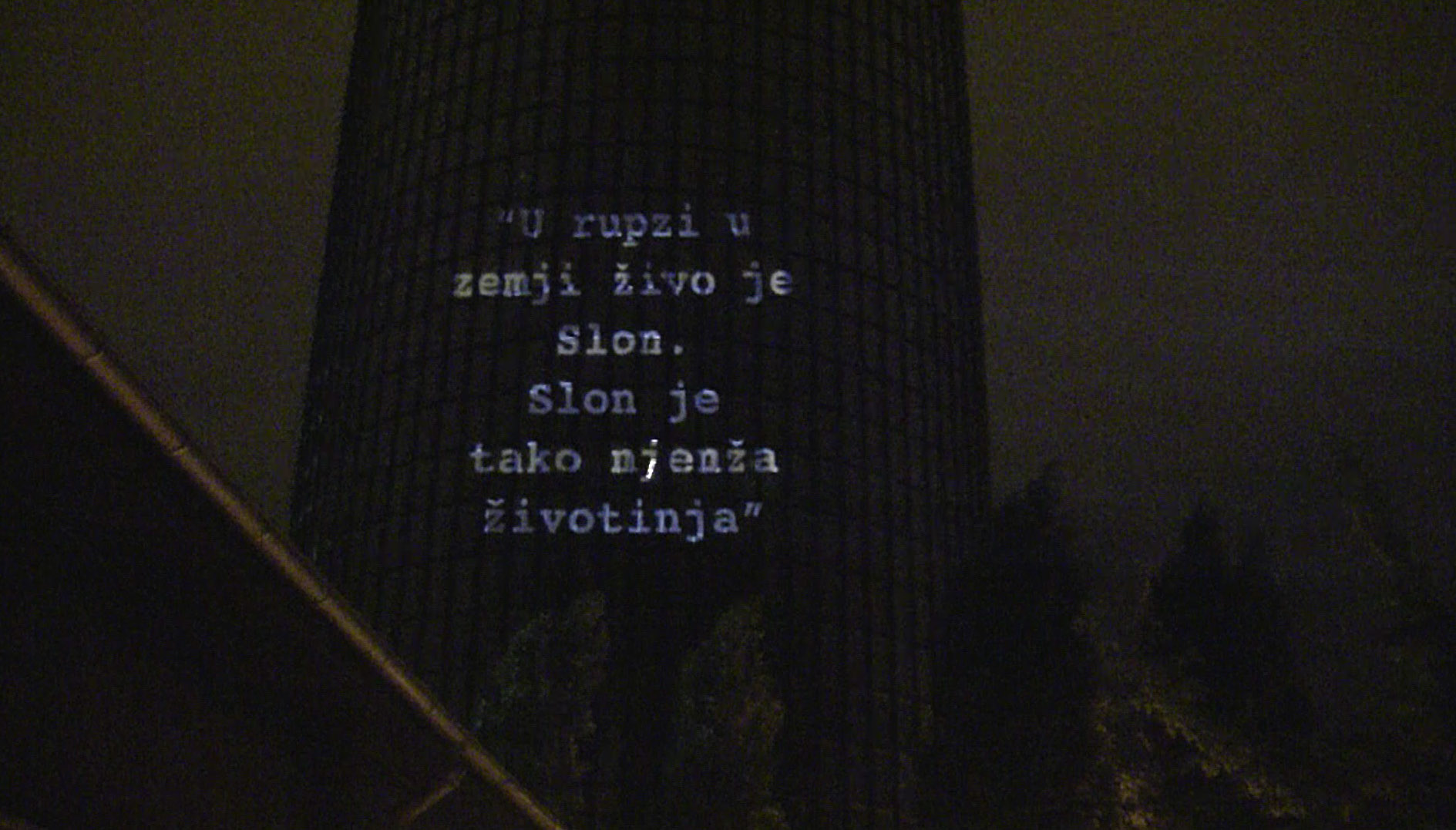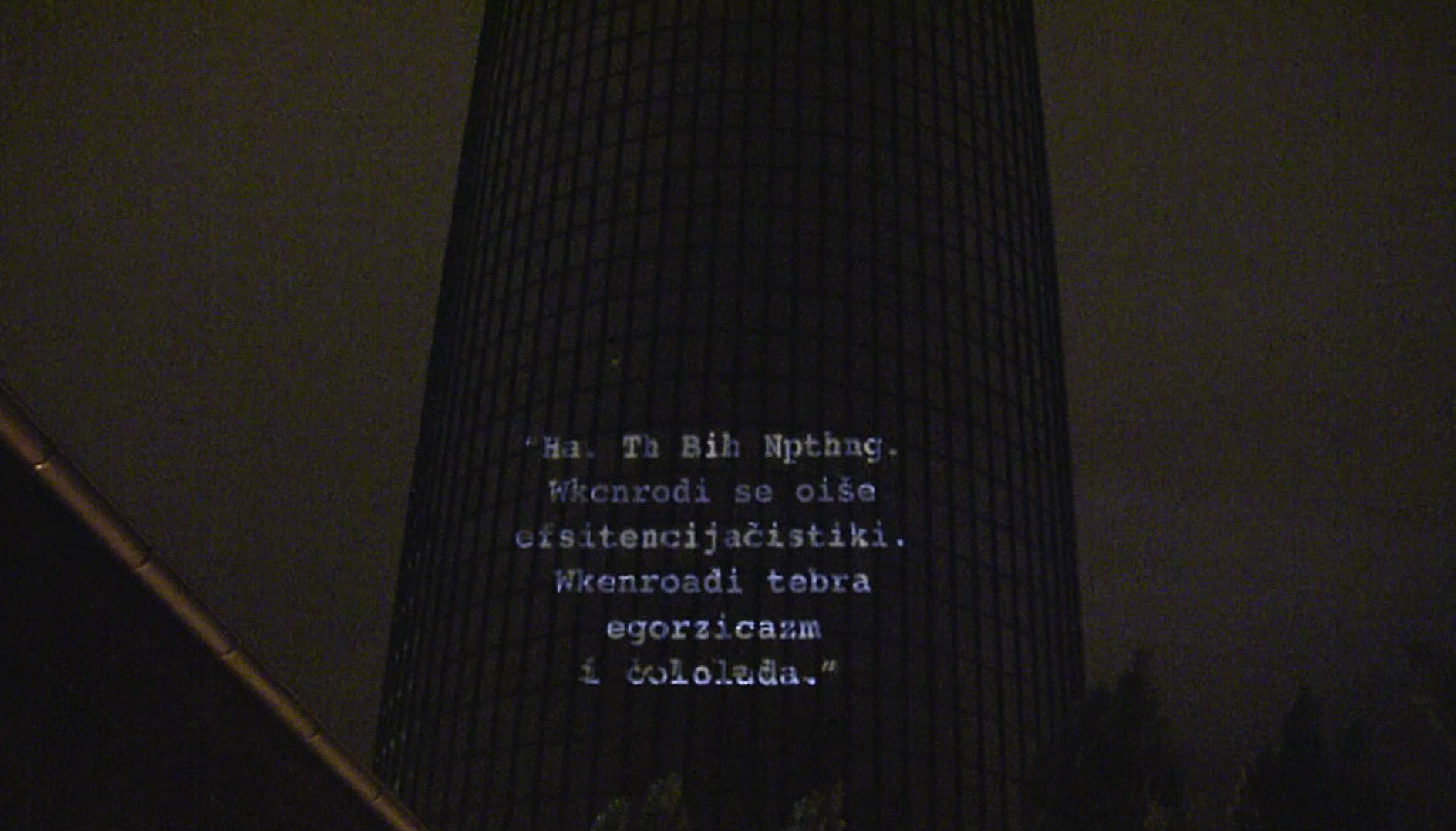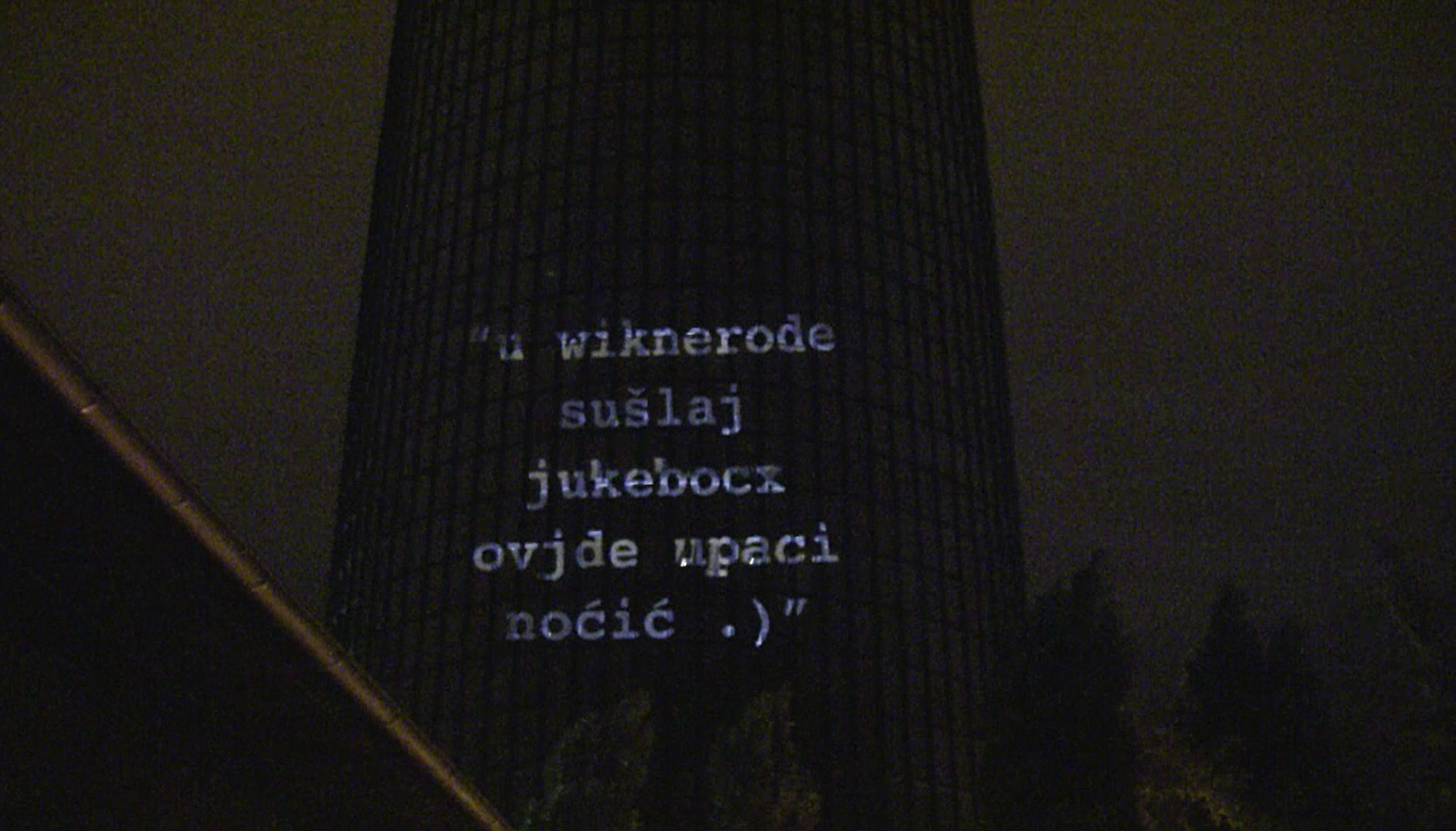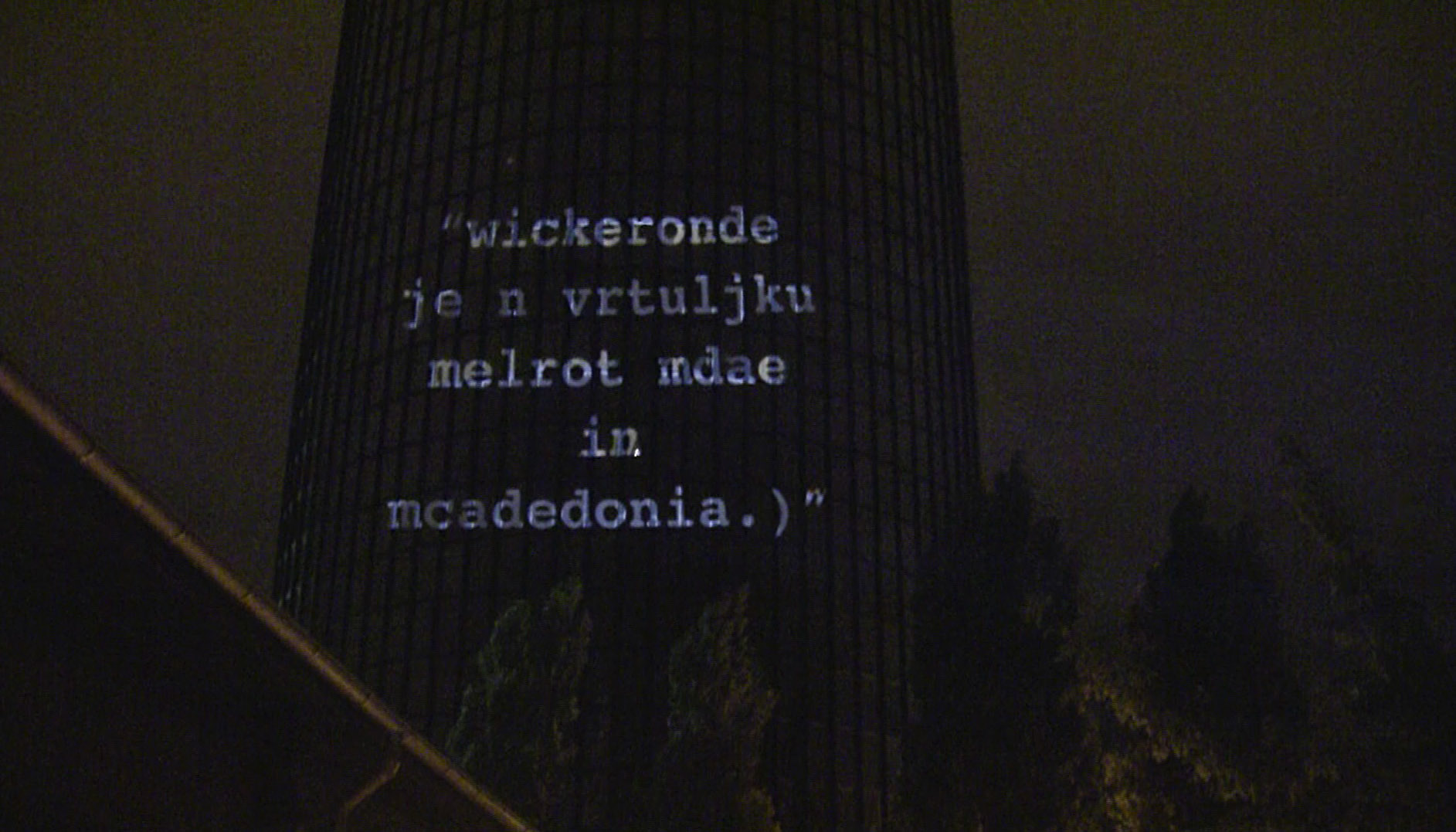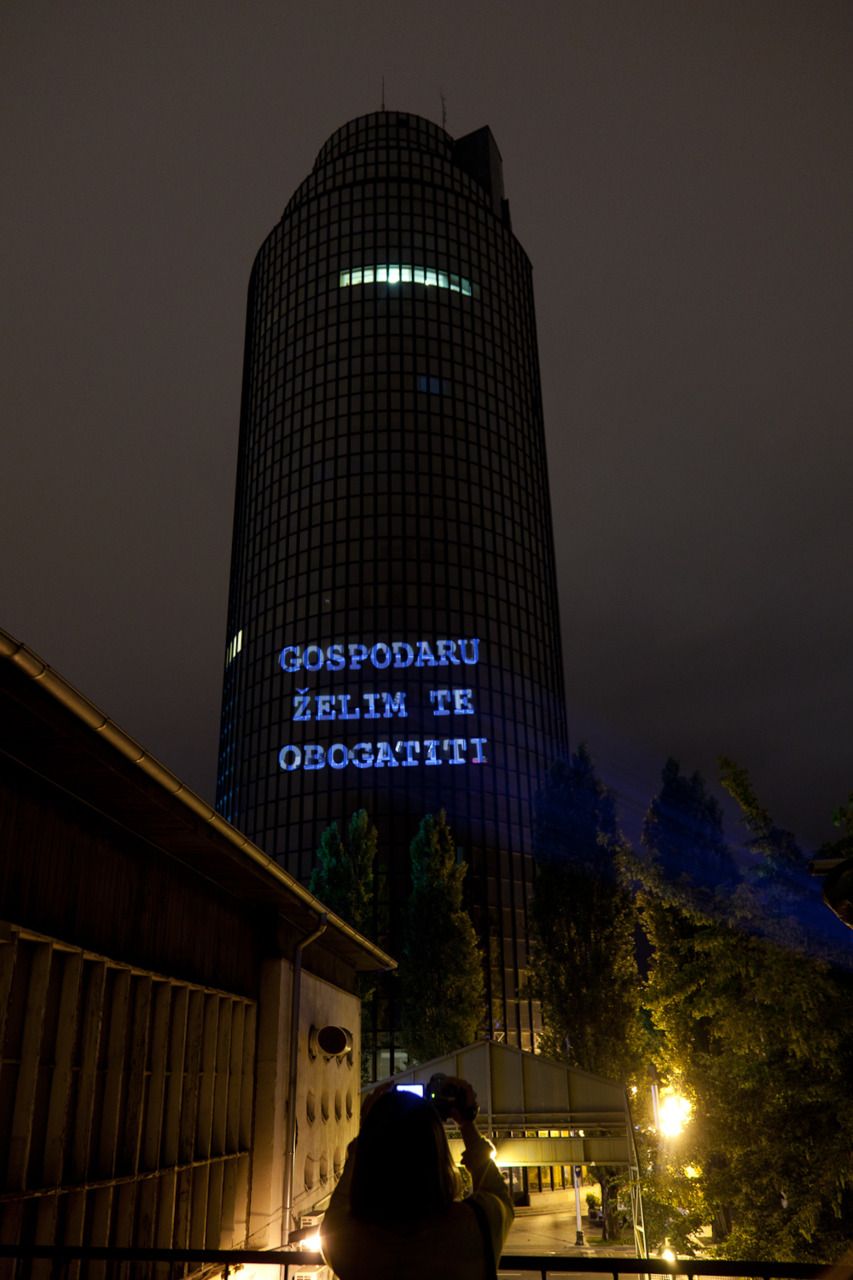Rafaela Dražić's action on Cibona Tower
Thanks to cheap labour
Press release for the action of Rafaela Dražić on the Cibona Tower within the framework of UrbanFestival 11
The theme of this year’s UrbanFestival, the place from which we began our research and communication with artists, was the architecture of skyscrapers. The topic very quickly directed us, together with artists and other participants, to the question of the difference between the private and public, those border line situations in which it is difficult to define the “public-ness” of space considering the processes of privatization in varying aspects.
We invited Rafaela Dražić, a designer by vocation, to participate in this year’s UrbanFestival with a new project, specially conceived for this occasion. Our choice was based above all on that segment of her practice in which she intertwines her role as a designer with those of curators and artists, as well as giving these roles an activist dimension. For example, at the banned exhibition 7 nula [7 zeros] she exhibited photographs of graffiti that criticised the policies of Željko Kerum, whilst for the Ad hoc project she made her own kind of «game rules» for thinking about the concepts of images and censorship and invited numerous colleagues to participate.
Bearing in mind the work of Rafaela Dražić and the direction in which the research of this year’s festival theme was heading, we knowingly entered into the open field where the borders between media and strategies of design, and art and activism blur.
The work of Rafaela Dražić consisted of a two-hour night projection of slogans, photomontages and illustrations created by a group of independent journalists, activists, designers and artists, which were played on the façade of the Cibona Tower. The content of the messages critically referenced the business dealings of the Agrokor Company through more or less directly provocative, short textual and visual messages. To us, as curators of this project, but also as authors of one of the messages that was being displayed on Cibona and also to individuals who were present with Rafaela at the moment of the realization of the project and who managed the technical aspect of the preparations, it was of primary importance to send out into the (physical) public and media space a critique of the business dealings of Agrokor, a critique which we think is not sufficiently present in the current public discourse. We publicised the action in the media anonymously for two reasons. On the one hand from the very beginning we wanted to prevent the event from being labelled artistic, and thus for it to be reported only as part of the framework of cultural happenings from which we noticed the risk that our direct expression of frustration regarding the political and economic situation in the country may loose importance. On the other hand, we were interested in what way, or if in any way at all, the action will be interpreted in the media.
Ana Kutleša, Ivana Hanaček and Marijana Rimanić, curators of the UrbanFestival 11
Master I want to make you rich
I thought about the invitation of the UrbanFestival curators to participate in this year’s edition that problematizes the Zagreb skyscrapers primarily as a way of understanding the roles within the pre-established divisions between players in festival events: artists on one side and curators and organisers on the other. I was interested in whether it is possible to, and how to realize, activist work within the formal organisation of the festival, and re-examine defined relations of initiators and authors from the perspective of the everyday practice of a graphical designer who does not work “for” but “with” (someone).
My proposal, in which the curators were included as active participants, thus consisted of a direct intervention in one evening on the façade of the Cibona Skyscraper, a sport-business centre built on the occasion of the Universiade [World Student Games] being held in Zagreb in 1987, that is today the headquarters of Agrokor, the biggest Croatian private company. One of the tallest skyscrapers in Croatia, the tower is among the most prominent examples of eighties’ architecture in Zagreb and the modernization of the broader downtown area and is also a symbol of the sporting success of the Cibona basketball team from that time and, indirectly, of the Yugoslav national team.
Agrokor’s decision to move their headquarters to this exact place, “occupying” fourteen of the highest floors of the skyscraper and placing its logo on its top, can be read as a “sample” of the process of the privatization of public space during the last decade and as a form of symbolic representation of the social and economic power of private equity over public good, which is best expressed precisely through architecture and such changes to the urban fabric of the city.
On the 30th of June 2011 an unannounced action took place in which participants were located in a hidden location from which they projected textual and visual materials designed by the already invited authors, as a commentary on the business dealings of Ivica Todorić and his company. Wanting to increase the visibility and to see the media reaction, after the two-hour action with the projector we forwarded the documentary photographs to the media.
Rafaela Dražić
Photo: Damir Žižić, stills from Rafaela Dražić’s video

